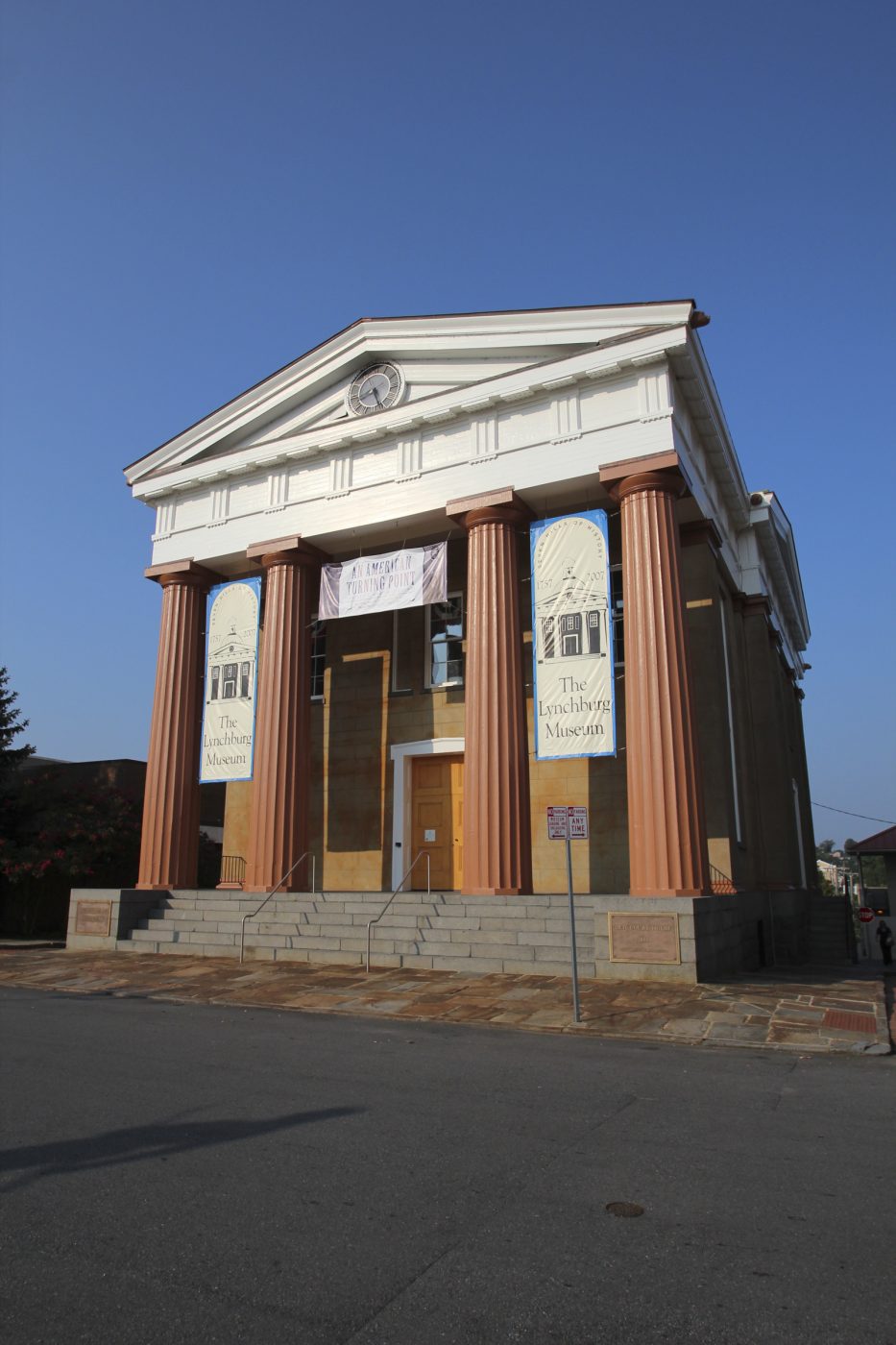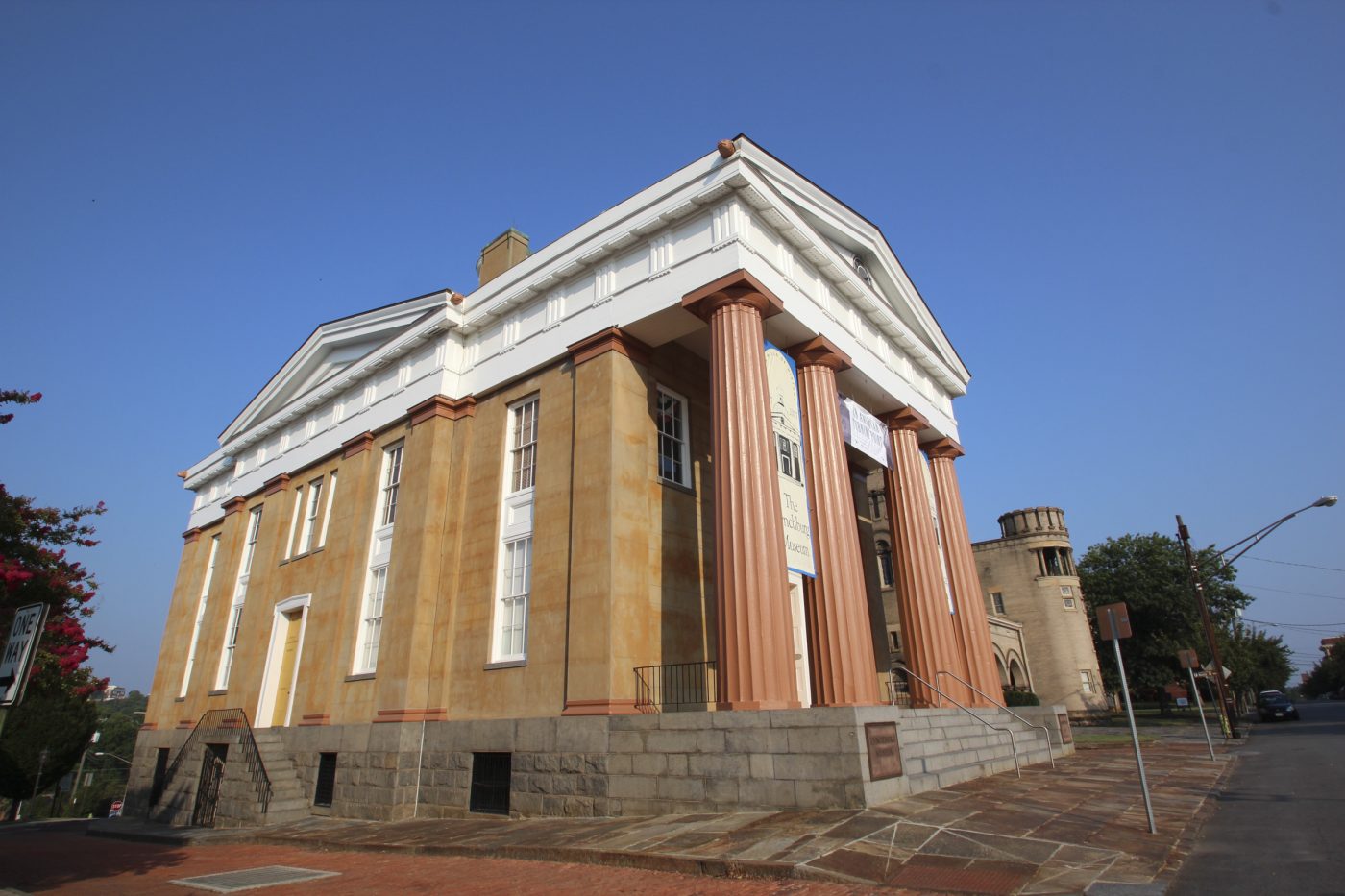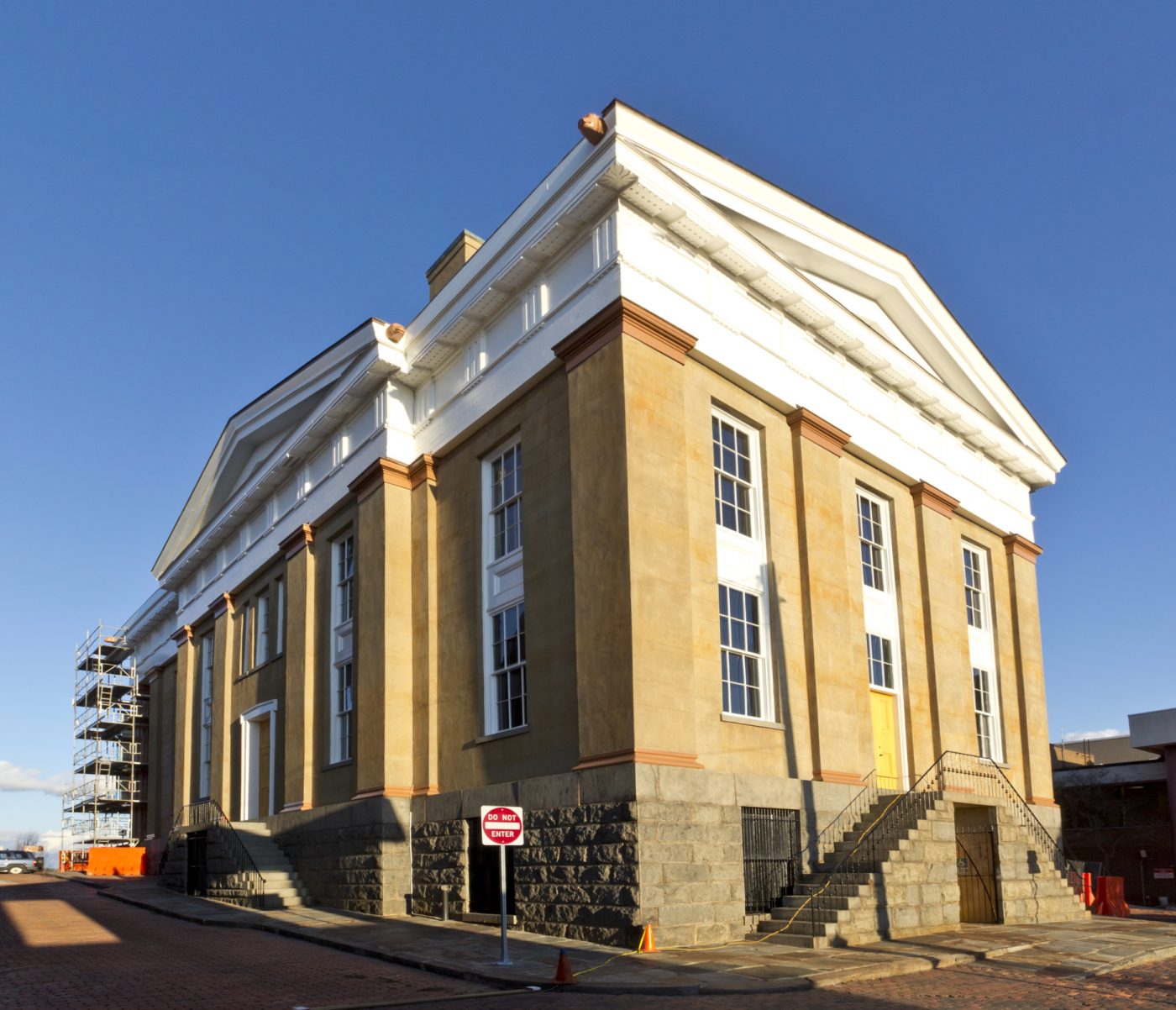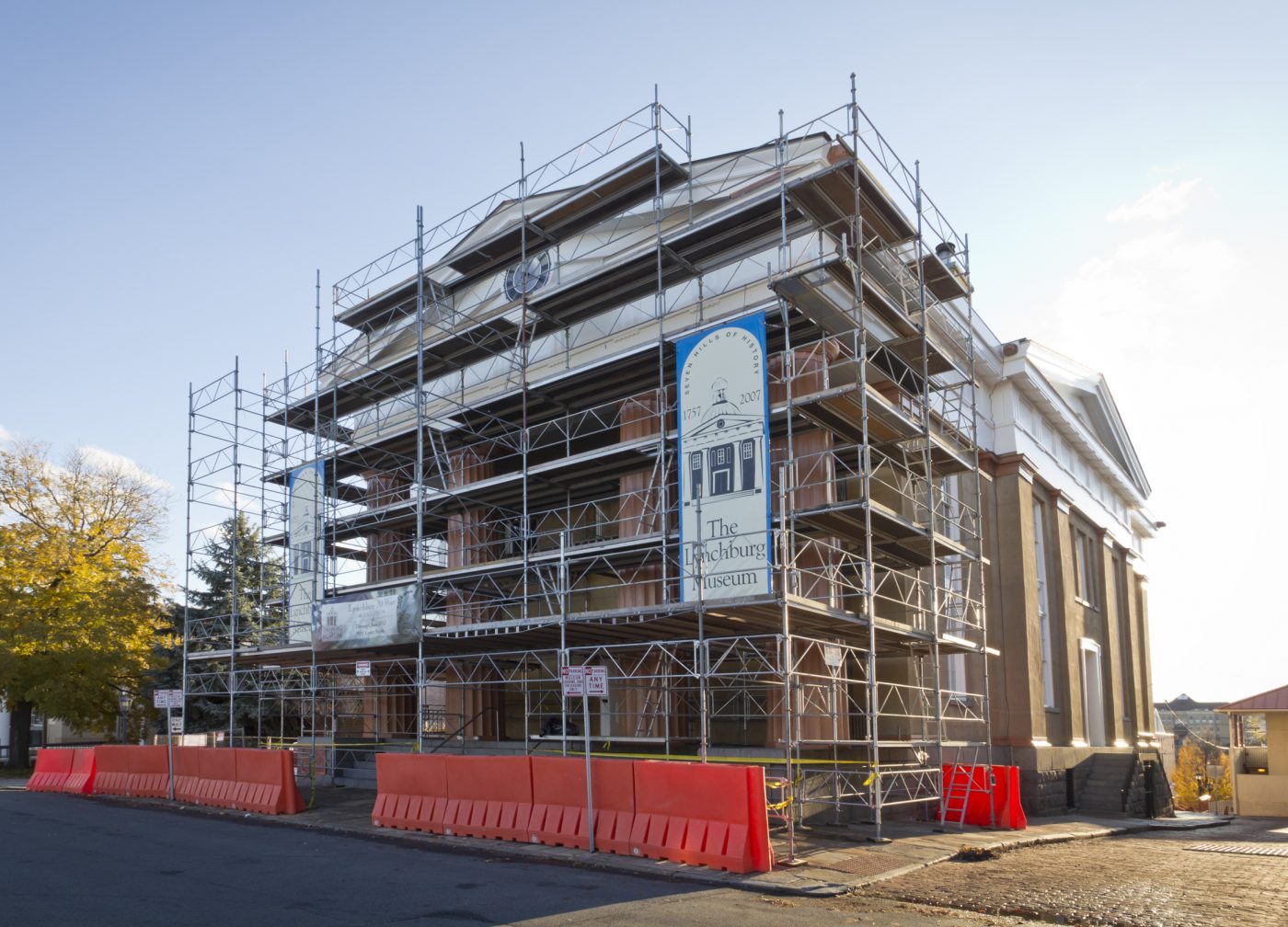



In 2011, repairs began on The Lynchburg Museum at the Old Court House. Architectural Partners (AP) was selected as the project architects, and Worcester-Eisenbrandt, Inc. of Baltimore, Maryland was awarded the construction contract. Work generally involved exterior renovation. Wood repairs at columns, entablature, windows, and belfry. All paint was removed for new coatings and window glazing putty. Repair and improvements were made to all roofing and flashings. A finial and lighting was added to the belfrey.
The Old Court House is Lynchburg’s second court house and was completed in 1855. It served a variety of courts until 1971 when it was chosen to house the City Museum, which opened in 1978. The Greek Revival building is listed on the State and National Register of Historic Places. It overlooks Downtown Lynchburg from the top of Monument Terrace and is one of Lynchburg’s iconic structures.
Construction began on June 27, 2011 and was completed January 6, 2012, approximately four months ahead of the City’s schedule. At completion, windows had been renovated by removal of paint and glazing putty; rotten wood had been replaced with Spanish cedar, a wood that resists rot; gargoyles, which were scheduled for repair, were instead replaced with new; roof repairs were made at the belfry, cupola, gutters, and flashings; improved lighting was provided at the portico and belfry; the faded terracotta color paint on the columns was refreshed with a coat of the original color; previous paint splatter from earlier times was removed from the stucco walls and granite stone work; and all the existing lead paint was removed to the original wood substrate and re-coated with alkyd primer and acrylic top coat. All work had to conform to the Secretary of Interior Standards for Historic Preservation.
There were several interesting moments of excitement during construction: 1) An earthquake struck the Eastern Seaboard, causing damage to one of the interior roof trusses. The building was severely shaken, and staff ran outside fearing for the workers’ safety. Fortunately, while standing on scaffolding, they weren’t aware anything had happened. After the quake, an inspection of the building found that a major roof truss member had cracked. 2) Lightning struck the bell tower of the adjacent church, which sent pieces of roof slate scattered across the Court House job site. 3) Workmen had to endure the ear-splitting sounds of the bell on top of the building as it sounded each hour.